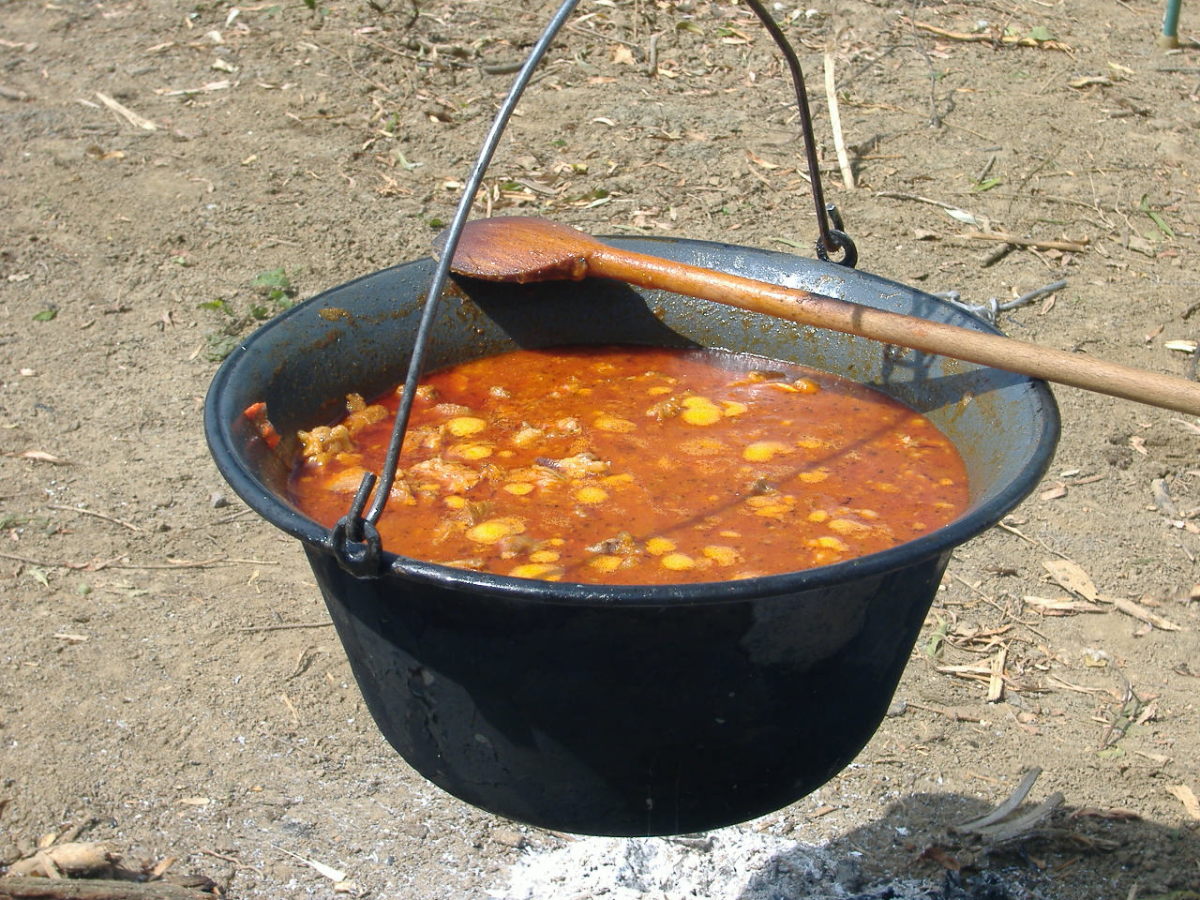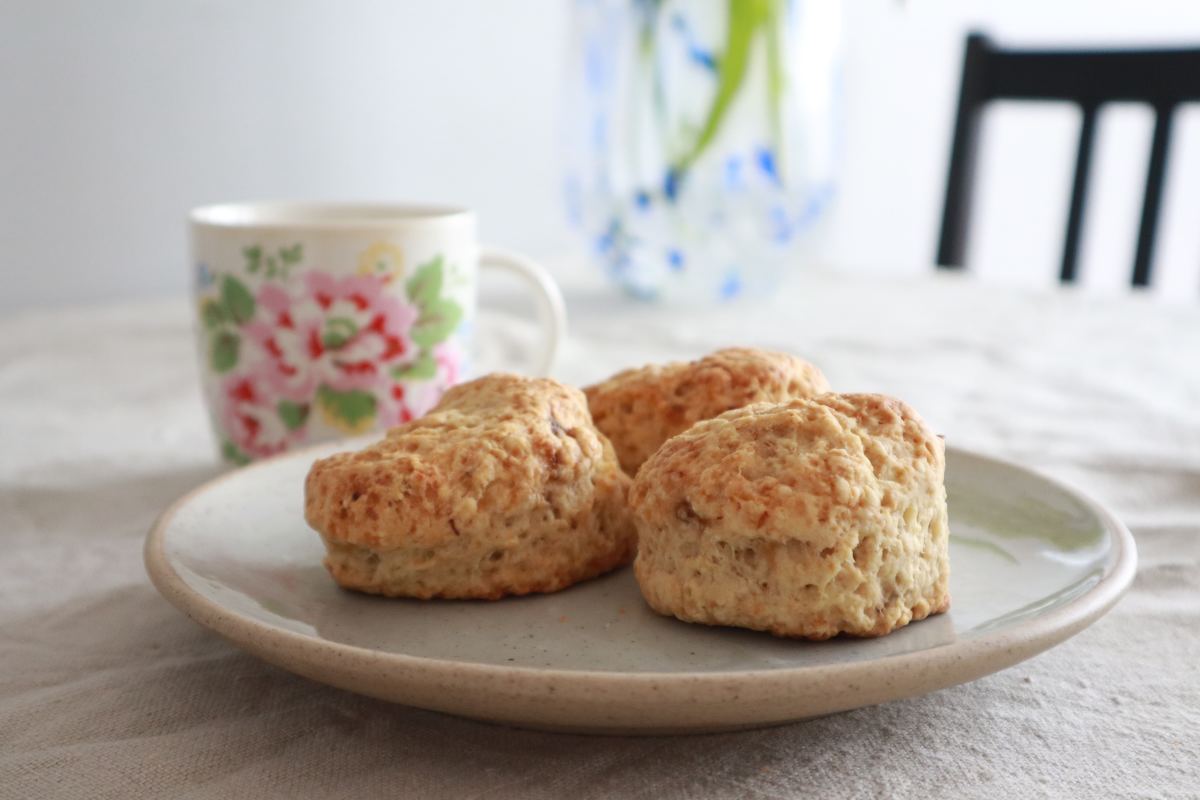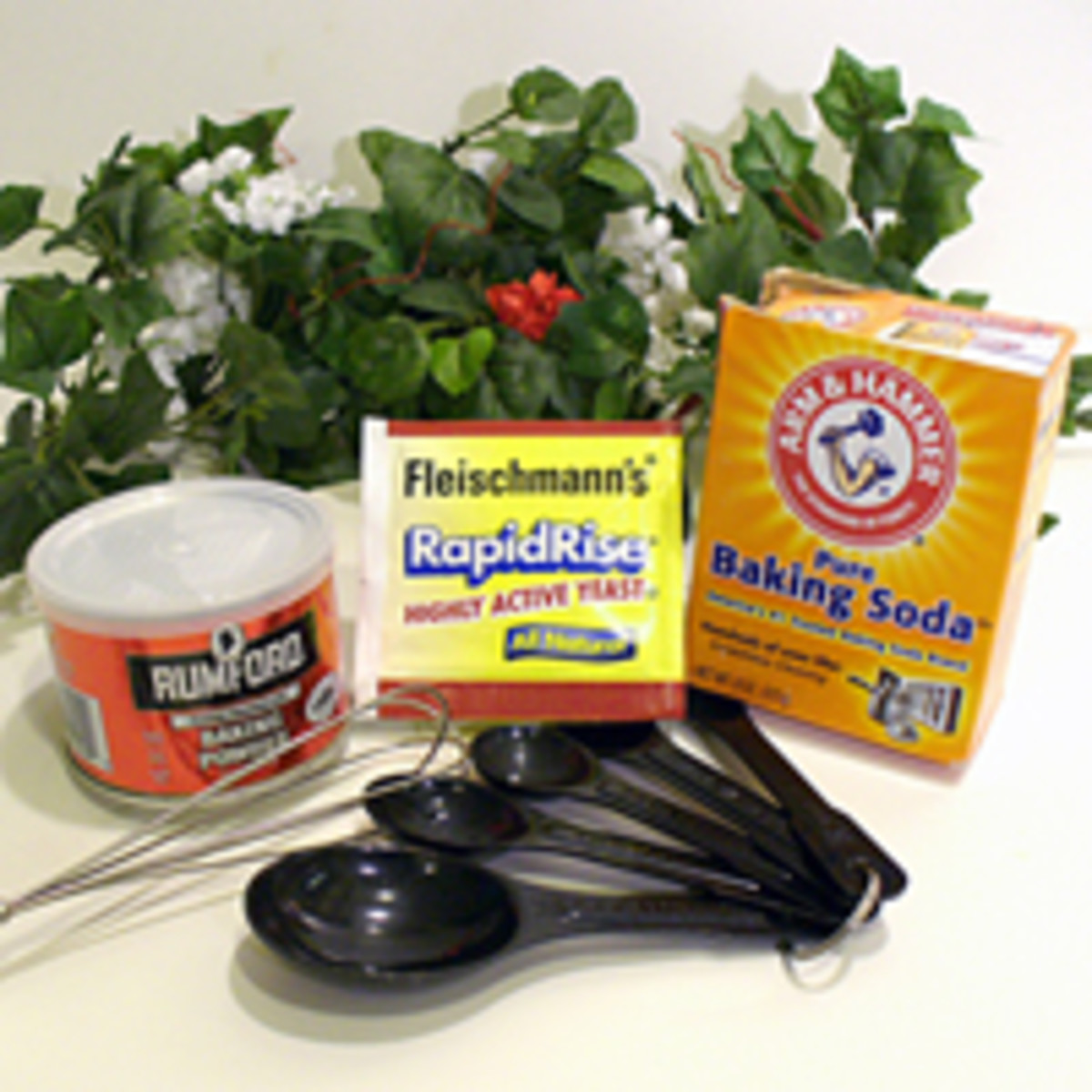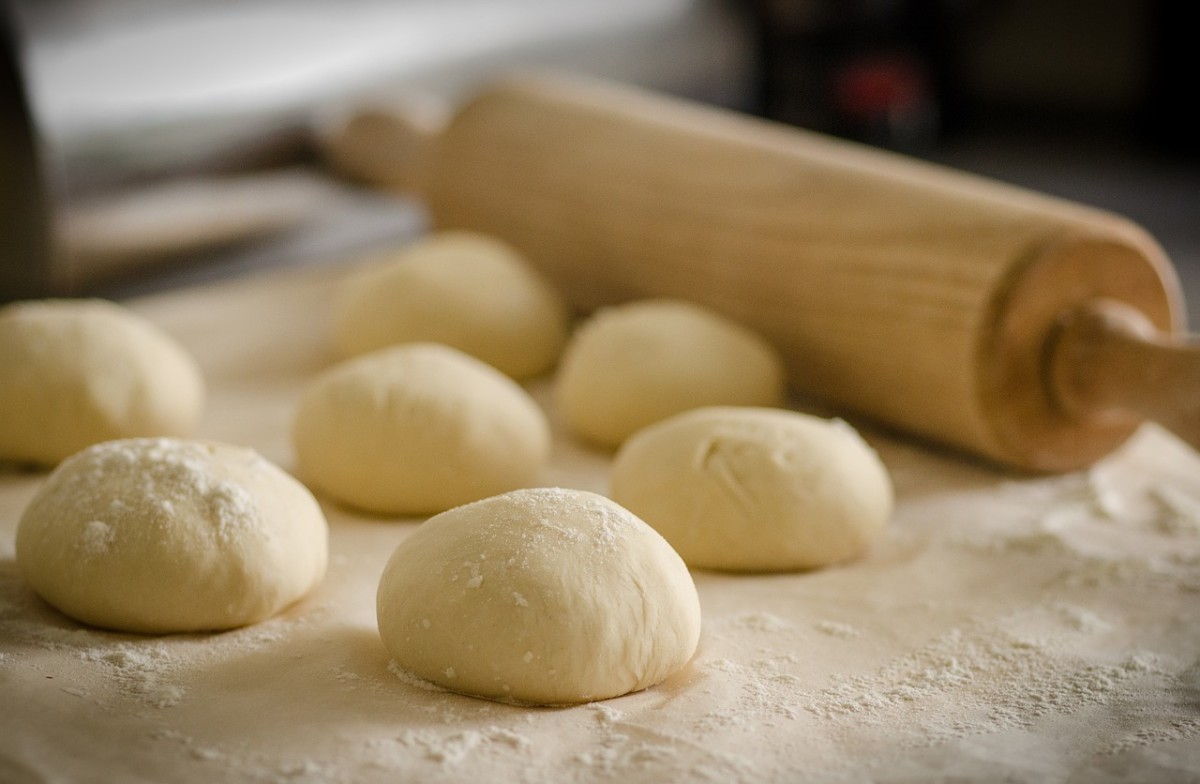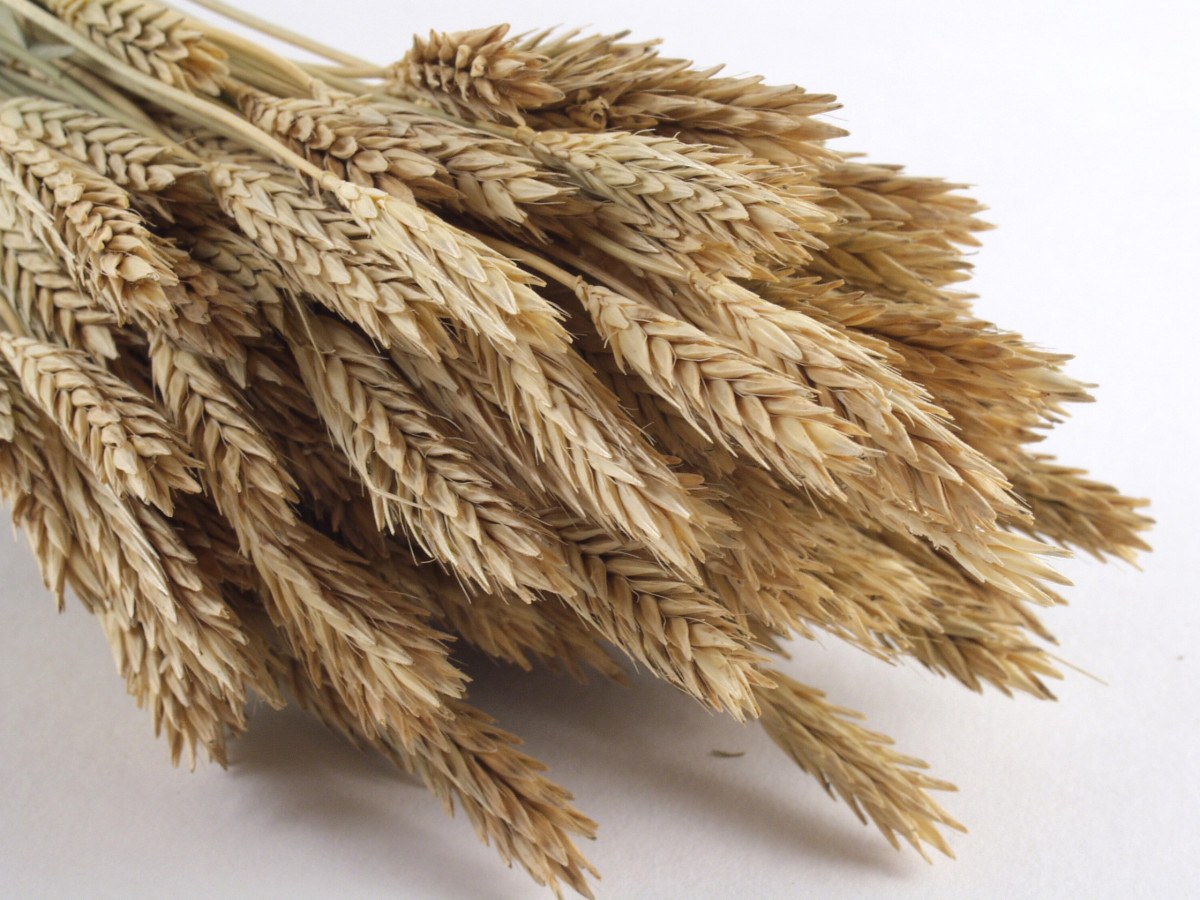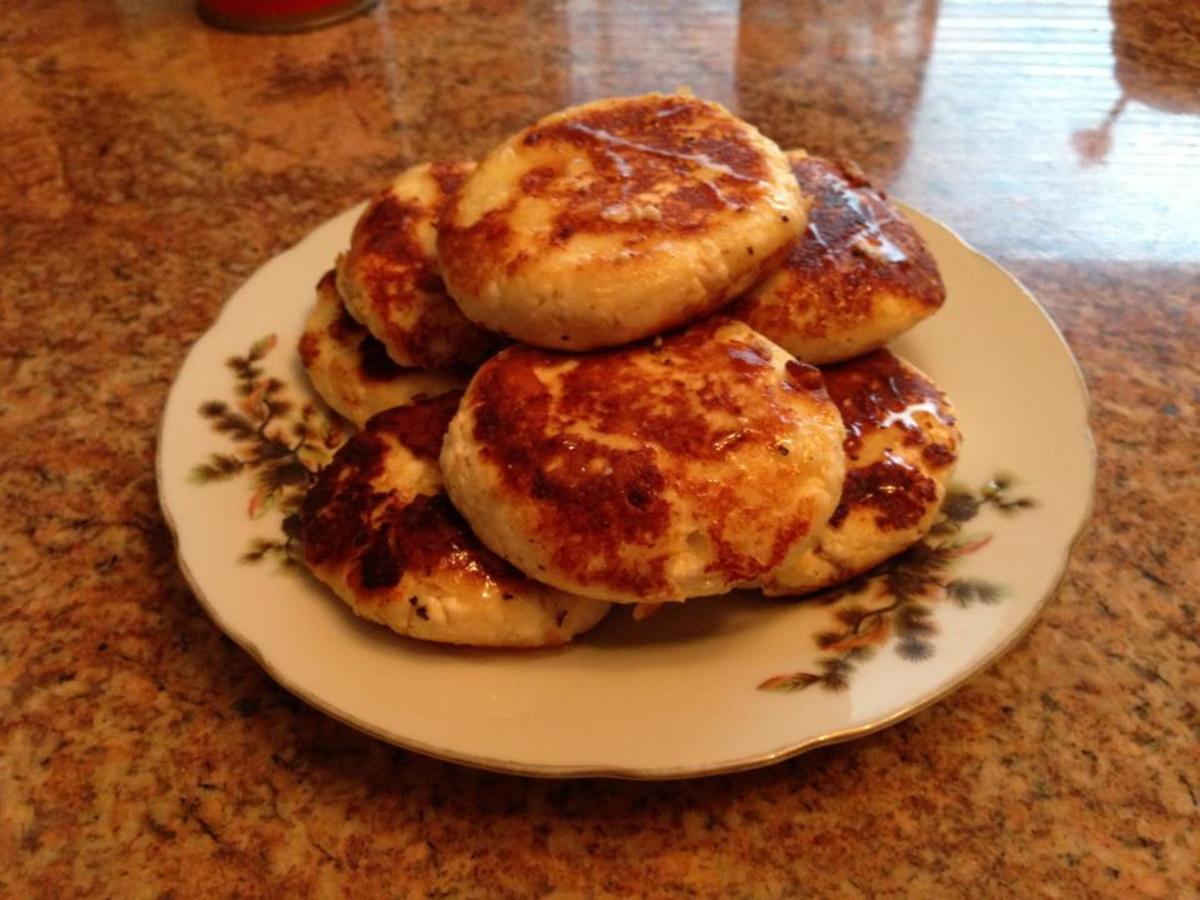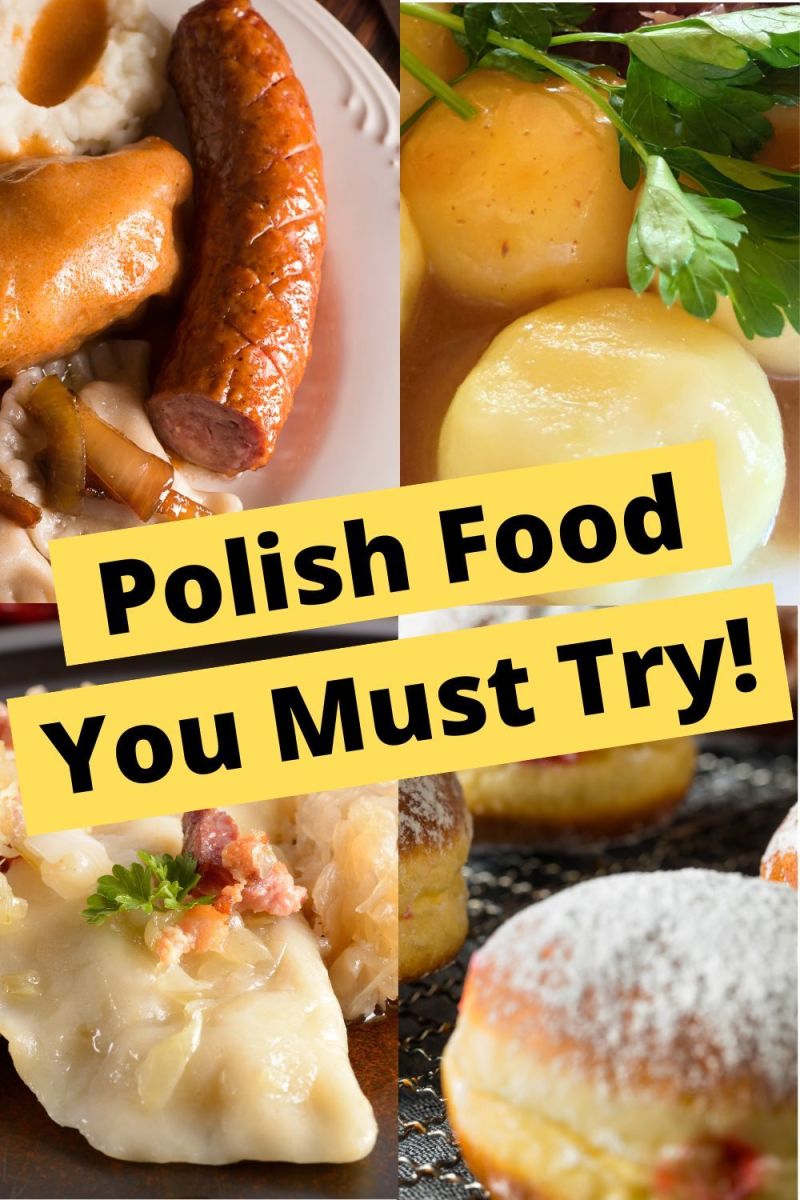Hungarian Baked Goods - Kenyer, Kalacs, Kifli and Pogacsa
Kenyer, Kalacs, Kifli and Pogacsa
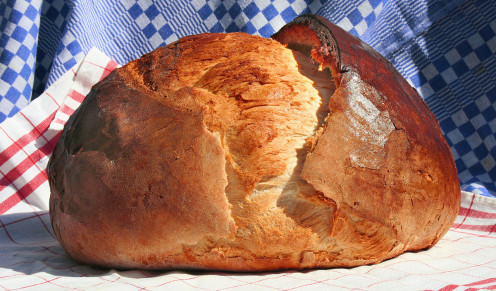
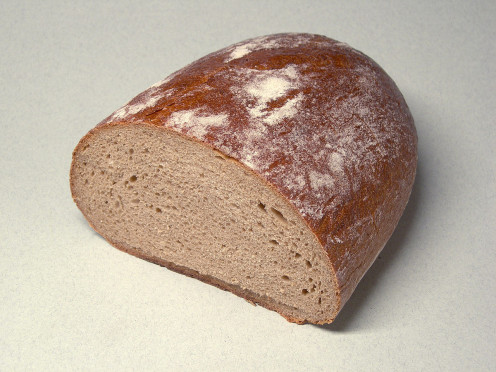
====================
It is not always easy to translate Hungarian words into English since there may not be a direct one-to-one conversion. This is not the case with kenyer (bread) and kifli (crescent rolls) although there are many different varieties of kifli in Hungary. Kalacs is another case completely.
Kalacs can take on many different forms in Hungary although they are always yeast breads made with milk. Sometimes they are braided and resemble French brioche or Jewish challah. Other times they are flatter and contain raisins or dried fruit and resemble American coffeecakes or German strudels.
There is even one version called kurtoskalacs (chimney cake), where the dough is rolled around logs and baked over an open fire.
Pogascak are another example since they can resemble rolls made with yeast dough or biscuits made with yeast or baking powder and they can be sweet or savory. One version is similar to American baking powder biscuits or British scones.
I will try to explain the differences and provide links to typical recipes for each category.
===================
Kenyer - (Bread)
===================
Hungarians love bread and there are countless regional variations. Although rye and wheat flour are most commonly used for bread making, potatoes are often added.
Certain areas use hops as yeast, which makes the bread very light. Other areas use vegetable broth instead of water and sourdough breads are also very common.
Caraway or anise seed is sometimes added and one variety, called beebread (meyheskenyer), contains eggs, honey, nuts, raisins and cocoa powder.
=================
Hungarian Potato Bread (Krumplis Kenyer)
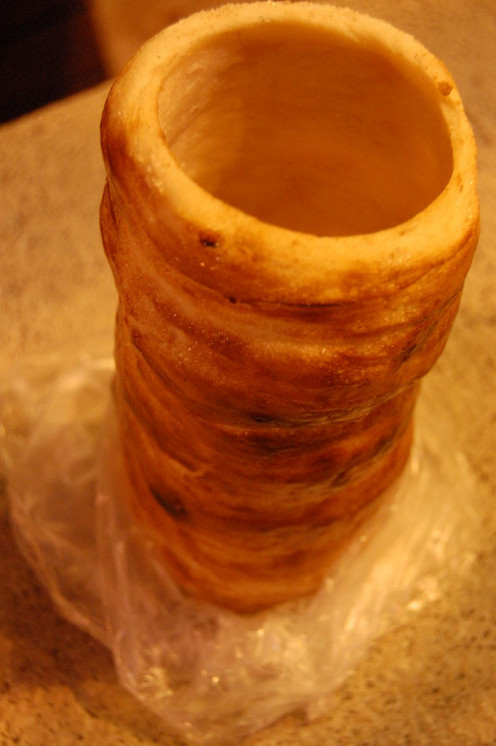
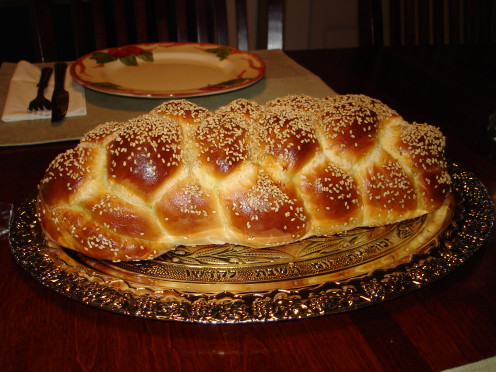
Kalacs
====================
Kalacs - (Milk Breads, Brioche and Coffee Cakes)
====================
The word kalacs comes from the Slavic word kolac, which comes from kolo, which means circle.
A kalacs is an enriched bread or cake, which is often served at weddings or on special days such as Easter or Christmas. It is often filled with raisins and nuts and enriched with eggs and milk.
It comes in different shapes and is frequently braided much like French brioche or Jewish challah. One traditional version called kurtokalacs (chimney cake) is made by wrapping the dough around a tube before baking it.
===================
Kurtos Kalacs - Hungarian Chimney Bread
Braided Kalacs
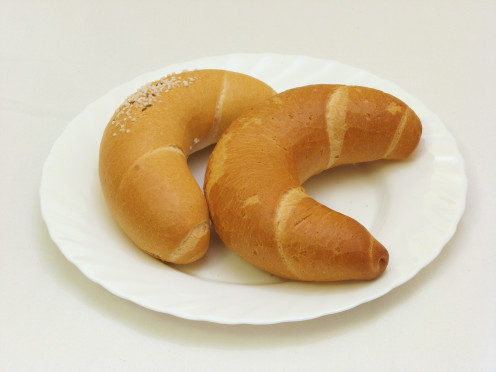
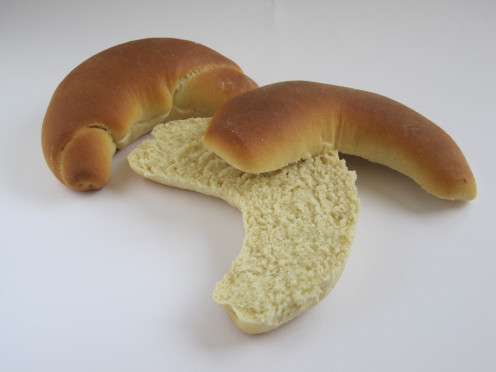
==================
Kiflik - (Crescent Roles)
==================
Kiflik are Hungarian crescent rolls (similar to croissants in France and kipfels in Germany and Austria).
Unlike the French versions, which are generally savory, Hungarian kiflik can be savory or sweet and can come in different sizes. Some are filled with raisins and nuts and are served similar to cookies.
Others simply add salt and caraway or poppy seeds and are served plain or with butter and jam. In most cases, the dough is rolled out fairly thin and then cut into triangles before being rolled up and baked into crescent shapes.
Occasionally, the dough is rolled out relatively square, coated with poppy seeds or jam and rolled up into tubes before baking. They end up looking like small jellyrolls.
====================
Hungarian Kifli (Crescent Rolls)
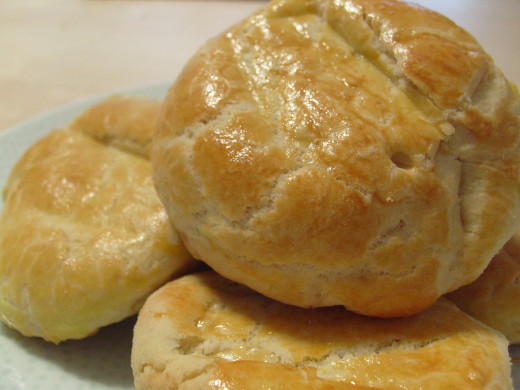
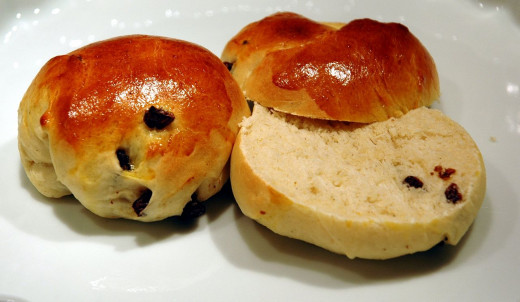
==================
Pogascak -(Rolls and Biscuits)
==================
The Hungarian word, pogacsa, comes from the Turkish word bogaca, which loosely translates into biscuit in English. However, this is an over simplification since pogascak can be either savory or sweet and they can be made with yeast dough like rolls or baking powder like biscuits or scones.
The savory versions can be made with butter, cracklings, bacon, cottage cheese and even with beans and the sweet versions can include honey, raisins, butter, eggs and even lemon juice.
I have included a table, which summarizes the differences between these four categories of bread, biscuits and rolls and at least one video showing how each of them is made.
In future hubs, I will provide specific recipes for each category and more detailed preparation and baking instructions.
====================
Hungarian Pogacsa (Rolls)
Hungarian Baked Goods Comparisons
HUNGARIAN NAME
| ENGLISH NAME
| LEAVENING AGENTS
| SHAPE
|
|---|---|---|---|
Kenyer
| Bread
| Yeast
| Loaves
|
Kalacs
| Milk Bread or Brioche
| Yeast
| Braids, Flat Loaves and Cylinders
|
Kifli
| Crescent Rolls
| Yeast
| Crescent Shaped
|
Pogasca
| Biscuits, Scones and Rolls
| Yeast or Baking Powder
| Biscuits and Rolls
|
Recipes for Hungarian Desserts
- Hungarian Desserts - Palacsinták, Meleg Tészták, ...
The four capstones of Hungarian desserts are Palacsintak (Crepes), Meleg Tesztak (Warm Noodles and Dumplings), Retesek (Strudels) and Tortak (Cakes and Tortes).Influenced by France, Austria, Italy and Turkey, Hungarian desserts are among the finest i - Hungarian Desserts - Strudels (Retesek)
The Turks brought phyllo pastry to Hungary in the sixteenth century. The Hungarians improved upon it by making the dough paper thin. Hungarian strudels are made with apples, cherries, cheese, poppyseeds and various nuts among other things. Making Hun - Hungarian Desserts - Chocolate Covered Cream Puffs (...
The French may have invented choux pastry (perfiteroles), but it was a Hungarian who filled them with whipped cream and covered them with chocolate. This hub provides both their interesting history and a recipe to make this fascinating dessert which - Hungarian Desserts - Chocolate Poppyseed Cake a la K...
Swiss born Hemrik Kugler opened one of the first coffee houses in Budapest in 1858. He soon became famous for his elaborate cakes with fancy fillings. This chocolate cake incorporates poppy seeds and is filled with currant jam. Kuglar's simple coffee - Hungarian Desserts - Chocolate Mousse Filled Cake (R...
This cake was named after the famous Hungarian Gypsy violinest. Rigo Jancsi, who seduced the wife of a Belgium prince. It consists of two layers of chocolate sponge cake, separated by a thick layer of chocolate mousse and a thin layer of apricot jam, - Hungarian Desserts - Dobos Torte
Jozsef Dobos created his famous Dobos torte in Budapest, Hungary in 1887. It pioneered the use of chocolate butter cream frosting and its caramel glaze allowed it to be shipped to other countries. This simplified recipe uses six layers of cake separa - Hungarian Desserts - Layered Crepes (Rakott Palascin...
In hungary, crepes (palacsintak) are layered to make cake-like desserts or rolled and arranged in baking dishes and covered with sauce. Two such recipes are included in this hub. One is for layered pancakes with apple meringue and the other is for ro - Hungarian Desserts - Crêpes (Palacsinták)
France, Austria, Czechoslovakia and Hungary all claim to have invented crepes. Regardless of who did, Hungary makes some of the best and uses them in both sweet and savory recipes. This hub explains how to make them and includes two dessert versions. - Hungarian Food - Meat Filled Crepes (Hortobagy Palas...
Hungarian crepes, known as palacsintak can be either sweet or savory. Dessert palacsintak recipes were given in a prior hub. Two examples of savory crepes are given here. Hortobagy palascintak are filled with onions, chicken or veal and paprika and t


